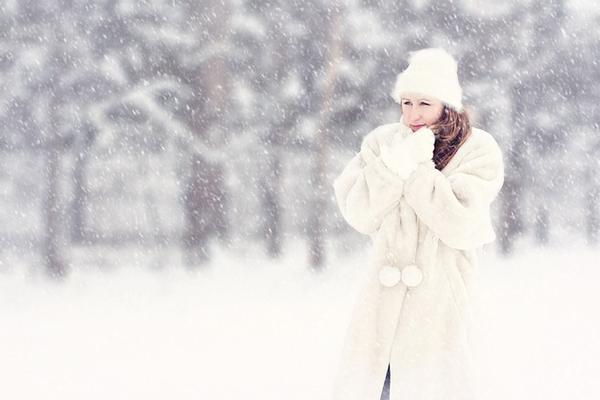Return To Blog
Jonval Leathers and Furs Discusses The Different Types Of Furs Part 3- Chinchilla
In the last couple of blogs Jonval Leathers and Furs moved on from discussing the different types of leather, and started exploring the other side of Jonval Leathers and Furs—furs! We began our discussion on the different types of animals the furs for the clothing and accessories come from.Â
Similar to leather, you would be surprised to find out just how many types of fur are used for clothing. In this blog series we will describe the fur and what makes it unique, special, or great for a particular type of clothing.Â
Jonval Leathers and Furs began its discussion of the different types of fur starting with beaver fur. We then moved on to discussing the next type of fur, chinchilla fur. We discovered that the chinchilla is actually a rodent, like a mouse or a squirrel. It was found high in the Andes mountains of South American, but is now found raised on ranches.Â
We also learned that the chinchilla has the densest fur of all fur. This fur is a defense mechanism keeping parasites from attaching the animal. It is this density of fur that makes it such a luxurious and beautiful fur.Â
In this week’s blog, we will continue our discussion of chinchilla fur. We will begin with some of its qualities that make it ideal for coats and clothing.Â
Color
Chinchilla fur is generally silver on top with a darker undercoat. When this silver color is enhanced with brighteners, it can have the very sought after slate blue color. It is also possible to have a variety of colors with various mutations. Â
Expense
Because chinchillas are such tiny animals, it takes a huge amount of them to make one coat. In fact, it may take up to two hundred chinchillas to make just one fur coat. For this reason, it can make purchasing a coat very expensive. It is estimated that to make one waist length chinchilla fur coat it could cost anywhere from $2,500-$25,000.Â
Along with taking very many animals to make just one coat, the process to used to make the clothing is time consuming and difficult. This is because chinchilla fur is very fragile and therefore must be tended to very carefully in order to turn it into a coat.Â
Benefits
In addition to being so dense and having a beautiful color, chinchilla fur is very warm (because of its denseness.) It is also very light. These two qualities are usually not found together. Either you get warmth and weight, or it is lightweight, but it is not so warm. With chinchilla, you get both together.Â
Chinchilla fur is also widely considered some of the softest fur in the world. It can feel silky and luxurious to the touch. It is also hypoallergenic, so no worries about allergies wearing this fur. Chinchilla is widely considered one of the most coveted and expensive furs you could own.Â
Read our next blog to discover the next type of fur we will be discussing. For all your fur needs, Jonval Leathers and Furs  has you covered (pun intended).
Â
Similar to leather, you would be surprised to find out just how many types of fur are used for clothing. In this blog series we will describe the fur and what makes it unique, special, or great for a particular type of clothing.Â
Jonval Leathers and Furs began its discussion of the different types of fur starting with beaver fur. We then moved on to discussing the next type of fur, chinchilla fur. We discovered that the chinchilla is actually a rodent, like a mouse or a squirrel. It was found high in the Andes mountains of South American, but is now found raised on ranches.Â
We also learned that the chinchilla has the densest fur of all fur. This fur is a defense mechanism keeping parasites from attaching the animal. It is this density of fur that makes it such a luxurious and beautiful fur.Â
In this week’s blog, we will continue our discussion of chinchilla fur. We will begin with some of its qualities that make it ideal for coats and clothing.Â
Color
Chinchilla fur is generally silver on top with a darker undercoat. When this silver color is enhanced with brighteners, it can have the very sought after slate blue color. It is also possible to have a variety of colors with various mutations. Â
Expense
Because chinchillas are such tiny animals, it takes a huge amount of them to make one coat. In fact, it may take up to two hundred chinchillas to make just one fur coat. For this reason, it can make purchasing a coat very expensive. It is estimated that to make one waist length chinchilla fur coat it could cost anywhere from $2,500-$25,000.Â
Along with taking very many animals to make just one coat, the process to used to make the clothing is time consuming and difficult. This is because chinchilla fur is very fragile and therefore must be tended to very carefully in order to turn it into a coat.Â
Benefits
In addition to being so dense and having a beautiful color, chinchilla fur is very warm (because of its denseness.) It is also very light. These two qualities are usually not found together. Either you get warmth and weight, or it is lightweight, but it is not so warm. With chinchilla, you get both together.Â
Chinchilla fur is also widely considered some of the softest fur in the world. It can feel silky and luxurious to the touch. It is also hypoallergenic, so no worries about allergies wearing this fur. Chinchilla is widely considered one of the most coveted and expensive furs you could own.Â
Read our next blog to discover the next type of fur we will be discussing. For all your fur needs, Jonval Leathers and Furs  has you covered (pun intended).
Â
